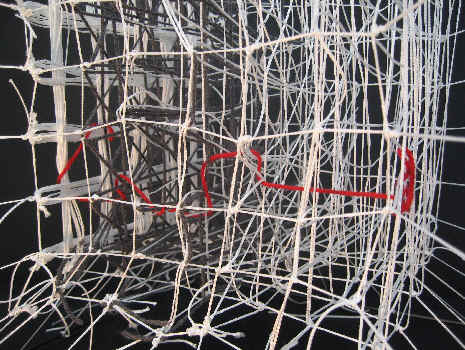|
|
 |
| Chicago
Ferry Terminal
The main concept for the Ferry Terminal is porosity with a subtext of pattern and movement, which was initiated through a series of conceptual studies. What was of primary interest in the studies were how an object or surface could be both open and a barrier; both permeable and non-permeable. Patterns derived from the studies were then used as a means to generate design decisions for the building as well as the site. Porosity occurs in both an urban and building scale. In the building, porosity can be seen by the large voids that are created through the floor plates that also allow for interconnectivity between the various levels and allow the users to orient themselves within the space. A solid and void relationship is also created in the facade where a pattern of solid corten steel is interchanged by large panels of glazing. At the urban scale, porosity can be seen as the site becomes a hole within the urban fabric by creating substantial green and park space available to the entire community. Programs are distributed within the building based on pattern and movement. Each floor plate is attributed a distinct characteristic related to the userís movement and duration of usage from analysis of the floor plateís pattern. Programs with short-term usage and fast pace movement directly related to the ferry is located on the ground floor. These programs are associated with people that require efficient travel to and from the boat with minimal time to spend within the building. Programs associated with slower paced movement with intermediate usage is located on the second floor. These programs are for people with some time available and are able to linger (i.e. restaurant/cafe, waiting room). Long-term use programs with the slowest pace of movement are located on the third floor (i.e. museum, staff areas). This organizational system based on movement is also applied to the site and maintains a similar sequence through multiple levels. Short-term, high-speed programs are located on grade (i.e. drop-off, marshalling) and the slower paced movement is located on an elevated contoured level where the land mass is built-up to meet the pedestrian and cyclist pathway in the adjacent bridge and connects back to the second floor of the building where the restaurant and cafe are located. The building is a column-less building, which allows for full expression of the angular walls without interference. The building is supported by structural corten steel panels comprised of two steel plates sandwiched together by steel rods. A diagonal grid of steel tubes is used for the floor plates to adequately accommodate the various long spans, cantilevers, and atriums.
|